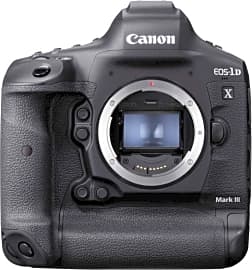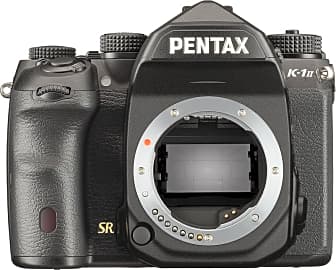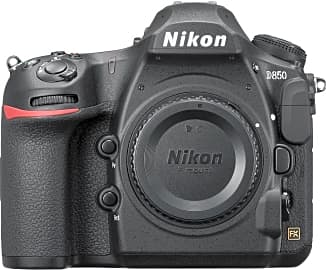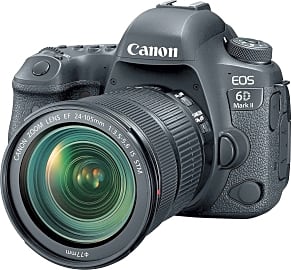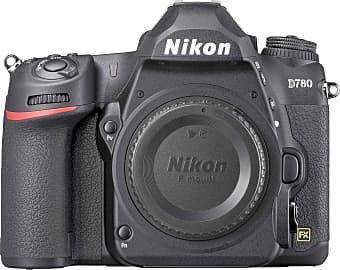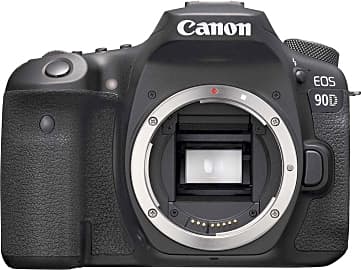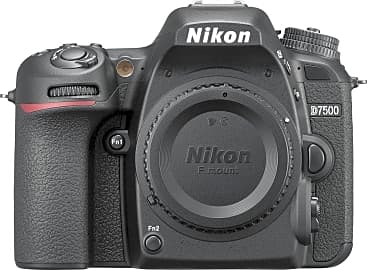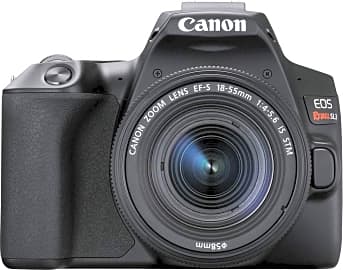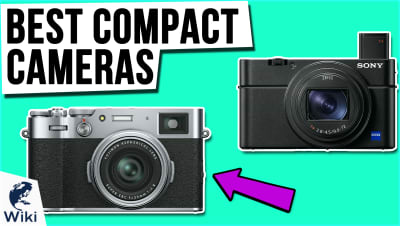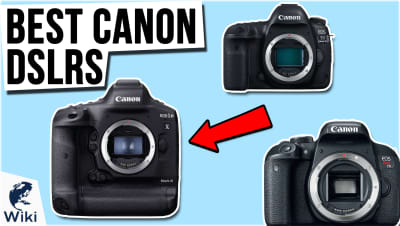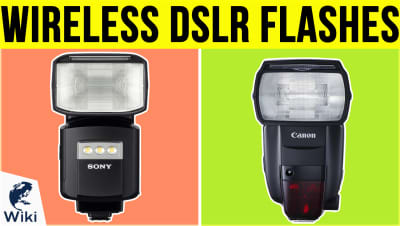The 10 Best DSLR Cameras

This wiki has been updated 41 times since it was first published in February of 2015. Whether you're just graduating from a smaller DSLR, a good bridge camera, or a simple point-and-shoot, the cameras on our list represent the best crop-sensor and full-frame models that the industry has to offer, as well as the smartest investments you can make if you're serious about photography. We've ranked them here by image resolution, low-light performance, and build quality. When users buy our independently chosen editorial selections, we may earn commissions to help fund the Wiki.
Editor's Notes
March 18, 2021:
Most of our choices on this list were still relevant selections for the category, representing a range of bodies aimed at both hobbyists and professionals, but there were a couple picks that we needed to swap out, in order to make room for upgraded models that have been released over the past year.
Our first new addition was the Canon EOS-1D X Mark III, a recent replacement for the company’s popular Mark II model from this line. They both use the same 20-megapixel, full-frame sensor, but this new model boasts more than triple the focus points and double the battery life. Its shutter's longevity has also been increased by 25%, and it now offers integrated wireless connectivity, allowing for conveniences like smartphone remote control.
Our second new inclusion was the Nikon D780, which replaced the company’s D750 option. Both of these bodies use full-frame sensors, although the D780 does offer a slightly larger pixel count (25 megapixels compared to 24 megapixels), but the shutter in the D780 actuates in half the time of the D750 (1/8,000 second compared to 1/4,000 second), and its battery should last almost twice as long (2,260 shots compared to 1,230 shots). The D780 also includes the addition of anti-flicker functionality and Bluetooth connectivity.
If you know that some of the mid-grade picks lower down on this list are just not going to cut it for you, then you might want to hop over to our list of full-frame DSLRs. And, we also maintain several sets of rankings for various camera accessories, like wireless flashes, gimbals and even shoulder rigs.
February 04, 2020:
It’s easy to confuse Digital SLRs with mirrorless cameras, and while these cameras can be relatively similar as they’re made for professionals (vs compact cameras made for the broader consumer market), the main difference is that DSLRs use a series of mirrors to provide an optical viewfinder, whereas mirrorless cameras use a digital viewfinder. Many of the models in the list I had to remove like the Fujifilm X-E3, Sony ILCE9 a9 and Sony a7R III were mirrorless cameras (not DSLRs), and I don’t know what they were doing here in the first place.
While I like to promote brand variety where suitable, nowadays, Nikon and Canon models dominate the DSLR market in terms of quality, with few other outside-brand models ever joining their ranks. Note that we do have a separate list for Canon DSLRs seeing as they’re such a dominant brand in this market. I have however included one reputable model from an alternative brand - the Pentax K-1 Mark II, which is a full-frame DSLR. I believe that Pentax and Nikon both use the same crop-factor (1.5x) for their APS-C sensors, so any Nikon/Pentax APS-C crop-sensor models in this list should use sensor sizes of around a 24 x 16 mm versus around 22.5 x 15 mm for Canon APS-C models (crop factor = 1.6x).
The obvious advantage of full-frame models is that their pixels are larger and can let in more light, so they capture better images at higher ISO sensitivities (low-light conditions) and produce less ‘digital noise’ (pixel distortion, grainy images). I’ve therefore decided to leave in many of the full-frame models from prior to the update, including the Nikon D750, Nikon D850, and Canon EOS 5D Mark IV, and, of course, the ultra-professional models, the Canon EOS-1DX Mark II and Nikon D5, though we will have likely highlighted more crop-sensor models in the list for the best DSLRs for Beginners. In addition, I’ve added another full frame - the Canon EOS 6D Mark II (which is quite similar to the Nikon D750, though it does use Canon’s super-responsive Dual Pixel CMOS AF (Auto Focus) technology). I’ve rounded out the list by including some APS-C models with some semi-professional picks, like the Canon EOS Rebel SL3 and Canon EOS 90D, which complement the Nikon D7500 that was already here before the update.
The EOS-1DX Mark III (the Mark II’s successor) was just released a week before this update, and while I initially thought of listing it, I didn’t want to remove any great models, and detract from the list, since it’s a new and relatively unexplored model, though I expect it to make an appearance in a couple of months.
Special Honors
Phase One XF IQ4 The price tag is sure to send most running in the other direction, but for those who can afford it, the XF IQ4 is an impressive machine that's unlikely to disappoint. Its 151-megapixel sensor makes super-large prints and ultra-close cropping possible on a level that most cameras can't compete with. phaseone.com
Hasselblad H6D-400C MS Coming from a renowned Swedish camera company, this model offers stunning resolution by combining a 100-megapixel sensor with multi-shot technology to capture the equivalent of 400-megapixel images. As you might imagine, the results are incredibly crisp and completely free of moiré. hasselblad.com
The Problem Of Pixels
Over a similar span of years to the iPod's development, the camera industry has become obsessed with that one statistic: the megapixel count.
I found my family's old digital camera from the early aughts a few months back, and it still had the little promotional stickers attached to it that boasted its features. It had a whopping three megapixels!
It was kind of like going back and watching the first iPod launch as Steve Jobs says his 5GB music device is just the size of a deck of cards. Now, I don't know how many of you remember those first generation iPods, but they were like big, alien bricks of soap compared to the sleek designs that exist today.
Over a similar span of years to the iPod's development, the camera industry has become obsessed with that one statistic: the megapixel count.
An increase in megapixels is rarely a bad thing, but it's only one of a slew of variables that determine your overall picture quality. The reason it gets so much attention is that it's easy to quantify; it's a relatively small number that you want to be as big as possible.
But what do the megapixels actually do?
Well, a pixel measures two basic things: whether or not light is hitting it, and how much light is hitting it. When you stack those pixels tightly together, you can achieve higher resolution photos from the same field by having more nuanced contrast throughout.
The problem is a law of diminishing returns. As you increase your pixel count beyond 10 MP, the amount by which your resolution increases gets smaller and smaller.
What's worse is that an increased pixel count also decreases your low light performance. You ever enter a dark room after being out in the blazing sunlight, and you can't see anything until your eyes adjust? Well, pixels are like pupils with a fixed diameter, so if they're too small, they can't drink up light from a darker source.
All this is to say that, unless you're shooting high-resolution photographs for print advertisement with a bevvy of professional lights and maybe even a couple of assistants, you don't actually need anything more than 20 MP. So, focus, instead, on these cameras' other stats.
What's In A (Brand) Name?
Reaching back into the film era, the two giants of the camera industry dominated the landscape and posed the same question from shooter to shooter: Nikon or Canon, Canon or Nikon?
Even then there were better cameras on the market, namely by Leica and Hasselblad, but they were often cost prohibitive for the vast majority of photographers. They still are.
And neither Canon nor Nikon has a viable mirrorless system.
In today's digital market, there are a few competitors keeping up with the big two by offering features that they don't. For example, Panasonic introduced 4K to consumers while Nikon and Canon were still perfecting their performance at 1080.
And neither Canon nor Nikon has a viable mirrorless system. Each company has tried, but you've probably never heard of the cameras–they were that bad.
Still, photographers tend to gravitate toward one of these two brands, especially if they're working professionals in still photography fields.
There was a time when Canon's 5Ds were the finest videography DSLRs in the world, and Nikon was desperate to catch up, but Sony has come along with its a7 series and taken that corner of the market by storm.
Between Nikon and Canon, really, there's almost no difference. I recommend putting one in your hand and playing with it. Personally, I found Nikon's control layout much more in tune with the way my brain works when shooting, but then all my friends shoot Canon.
The Best Kind Of Camera
In the late 1960s, the only two people apparently not taking immeasurable amounts of drugs (or perhaps the only two taking enough of them) developed the first digital imaging technology using a CCD sensor.
Just six years later, Kodak had invented the first digital camera incorporating this technology, with a whopping 100x100 pixel resolution.
Just six years later, Kodak had invented the first digital camera incorporating this technology, with a whopping 100x100 pixel resolution.
Sony and Kodak both chipped away at the concept for the next 15 years until Nikon came around with its E Series in 1991, a 1.3 MP digital camera that would kick off an engineering and marketing race that we're still enduring today.
Canon came to the party a little later, but since they had already established themselves as an imaging conglomerate in many more fields than Nikon, they were poised to sink more money into R&D, especially around the DSLR's potential as a video camera.
I won't spend too much time discussing the advent of the cameraphone and what that means for the future of DSLRs. There's an old saying in the camera world, though, that goes back to long before a digital image was ever rendered: "The best kind of camera is the one you've got on you."


